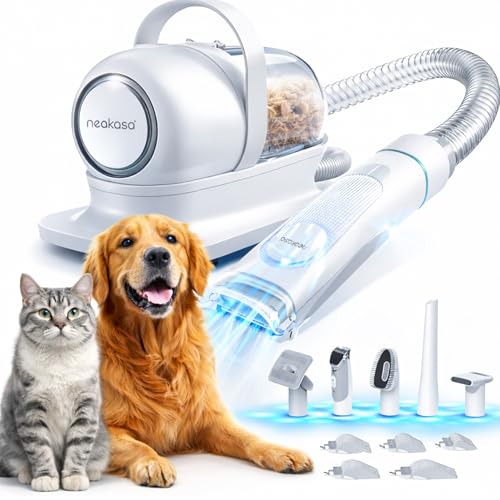It’s crucial to assess your furry friend’s health and environment if you notice accidents occurring unexpectedly. Begin with a thorough veterinary check-up to rule out any underlying medical issues, such as urinary tract infections or gastrointestinal problems. These conditions can lead to behavioral changes, including inappropriate elimination.
Next, evaluate the litter box situation. Ensure it’s clean, easily accessible, and placed in a quiet location. Older companions may have difficulty accessing boxes that are too high or located in busy areas. Consider the type of litter used; some may prefer softer textures or specific scents.
Pay attention to stressors in the household that might be affecting your pet. Changes in routine, new pets, or environmental shifts can trigger anxiety and lead to undesirable behavior. Providing a calm and stable environment is essential for their well-being.
Lastly, observe their behavior closely. Sometimes, marking territory or expressing discomfort can manifest in unexpected ways. Engaging them in gentle play or providing safe spaces can help alleviate stress and encourage proper habits. Taking these steps can significantly improve the situation.
Identifying Medical Issues in Senior Cats
Regular vet check-ups are non-negotiable. Signs of discomfort or behavioral changes can indicate underlying health concerns. Pay attention to unusual habits, like refusing to use the litter box or changes in appetite. These might suggest issues such as arthritis, kidney disease, or gastrointestinal problems.
Monitoring Behavior
Note any changes in social interactions or grooming habits. A decline in enthusiasm for play or increased isolation can signal distress. Watch for excessive vocalization or signs of pain during movement. These behaviors might highlight the need for a veterinary assessment.
Assessing Dietary Changes
Alterations in eating or drinking can be red flags. If there’s a sudden increase or decrease in water intake, it could indicate diabetes or kidney issues. Consulting your veterinarian about dietary choices is key, including inquiries about safe options like can i give my cat apple cider vinegar.
Behavioral Changes and Environmental Factors
If your furry companion has recently altered habits, consider evaluating their surroundings. Changes in environment can significantly impact behavior. For instance, introducing new furniture or relocating the litter box can create stress. Cats thrive on routine, and disruptions can lead to unexpected behaviors.
Stress Triggers
Identify potential stressors in your home. Loud noises, new pets, or visitors can unsettle even the most laid-back feline. Observe how your friend reacts to these changes. Providing a quiet space can help them adjust. Additionally, consider using calming products like pheromone diffusers to ease anxiety.
Litter Box Preferences
Examine the litter box situation closely. The type of litter, box cleanliness, and location matter. Some may prefer a covered box, while others like an open one. Regular cleaning is crucial; a dirty box can deter use. If you’ve recently switched litter brands, try returning to the previous type to see if that resolves issues. For more details on other breeds, check out how much are exotic shorthair cats.
It’s crucial to assess your furry friend’s health and environment if you notice accidents occurring unexpectedly. Begin with a thorough veterinary check-up to rule out any underlying medical issues, such as urinary tract infections or gastrointestinal problems. These conditions can lead to behavioral changes, including inappropriate elimination.
Next, evaluate the litter box situation. Ensure it’s clean, easily accessible, and placed in a quiet location. Older companions may have difficulty accessing boxes that are too high or located in busy areas. Consider the type of litter used; some may prefer softer textures or specific scents.
Pay attention to stressors in the household that might be affecting your pet. Changes in routine, new pets, or environmental shifts can trigger anxiety and lead to undesirable behavior. Providing a calm and stable environment is essential for their well-being.
Lastly, observe their behavior closely. Sometimes, marking territory or expressing discomfort can manifest in unexpected ways. Engaging them in gentle play or providing safe spaces can help alleviate stress and encourage proper habits. Taking these steps can significantly improve the situation.
Identifying Medical Issues in Senior Cats
Regular vet check-ups are non-negotiable. Signs of discomfort or behavioral changes can indicate underlying health concerns. Pay attention to unusual habits, like refusing to use the litter box or changes in appetite. These might suggest issues such as arthritis, kidney disease, or gastrointestinal problems.
Monitoring Behavior
Note any changes in social interactions or grooming habits. A decline in enthusiasm for play or increased isolation can signal distress. Watch for excessive vocalization or signs of pain during movement. These behaviors might highlight the need for a veterinary assessment.
Assessing Dietary Changes
Alterations in eating or drinking can be red flags. If there’s a sudden increase or decrease in water intake, it could indicate diabetes or kidney issues. Consulting your veterinarian about dietary choices is key, including inquiries about safe options like can i give my cat apple cider vinegar.
Behavioral Changes and Environmental Factors
If your furry companion has recently altered habits, consider evaluating their surroundings. Changes in environment can significantly impact behavior. For instance, introducing new furniture or relocating the litter box can create stress. Cats thrive on routine, and disruptions can lead to unexpected behaviors.
Stress Triggers
Identify potential stressors in your home. Loud noises, new pets, or visitors can unsettle even the most laid-back feline. Observe how your friend reacts to these changes. Providing a quiet space can help them adjust. Additionally, consider using calming products like pheromone diffusers to ease anxiety.
Litter Box Preferences
Examine the litter box situation closely. The type of litter, box cleanliness, and location matter. Some may prefer a covered box, while others like an open one. Regular cleaning is crucial; a dirty box can deter use. If you’ve recently switched litter brands, try returning to the previous type to see if that resolves issues. For more details on other breeds, check out how much are exotic shorthair cats.
It’s crucial to assess your furry friend’s health and environment if you notice accidents occurring unexpectedly. Begin with a thorough veterinary check-up to rule out any underlying medical issues, such as urinary tract infections or gastrointestinal problems. These conditions can lead to behavioral changes, including inappropriate elimination.
Next, evaluate the litter box situation. Ensure it’s clean, easily accessible, and placed in a quiet location. Older companions may have difficulty accessing boxes that are too high or located in busy areas. Consider the type of litter used; some may prefer softer textures or specific scents.
Pay attention to stressors in the household that might be affecting your pet. Changes in routine, new pets, or environmental shifts can trigger anxiety and lead to undesirable behavior. Providing a calm and stable environment is essential for their well-being.
Lastly, observe their behavior closely. Sometimes, marking territory or expressing discomfort can manifest in unexpected ways. Engaging them in gentle play or providing safe spaces can help alleviate stress and encourage proper habits. Taking these steps can significantly improve the situation.
Identifying Medical Issues in Senior Cats
Regular vet check-ups are non-negotiable. Signs of discomfort or behavioral changes can indicate underlying health concerns. Pay attention to unusual habits, like refusing to use the litter box or changes in appetite. These might suggest issues such as arthritis, kidney disease, or gastrointestinal problems.
Monitoring Behavior
Note any changes in social interactions or grooming habits. A decline in enthusiasm for play or increased isolation can signal distress. Watch for excessive vocalization or signs of pain during movement. These behaviors might highlight the need for a veterinary assessment.
Assessing Dietary Changes
Alterations in eating or drinking can be red flags. If there’s a sudden increase or decrease in water intake, it could indicate diabetes or kidney issues. Consulting your veterinarian about dietary choices is key, including inquiries about safe options like can i give my cat apple cider vinegar.
Behavioral Changes and Environmental Factors
If your furry companion has recently altered habits, consider evaluating their surroundings. Changes in environment can significantly impact behavior. For instance, introducing new furniture or relocating the litter box can create stress. Cats thrive on routine, and disruptions can lead to unexpected behaviors.
Stress Triggers
Identify potential stressors in your home. Loud noises, new pets, or visitors can unsettle even the most laid-back feline. Observe how your friend reacts to these changes. Providing a quiet space can help them adjust. Additionally, consider using calming products like pheromone diffusers to ease anxiety.
Litter Box Preferences
Examine the litter box situation closely. The type of litter, box cleanliness, and location matter. Some may prefer a covered box, while others like an open one. Regular cleaning is crucial; a dirty box can deter use. If you’ve recently switched litter brands, try returning to the previous type to see if that resolves issues. For more details on other breeds, check out how much are exotic shorthair cats.








